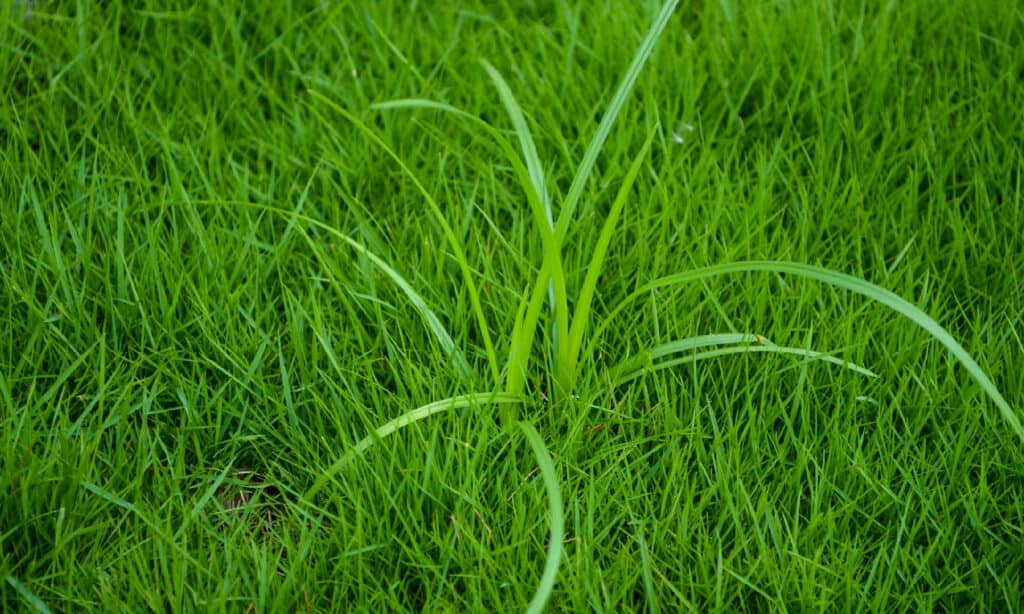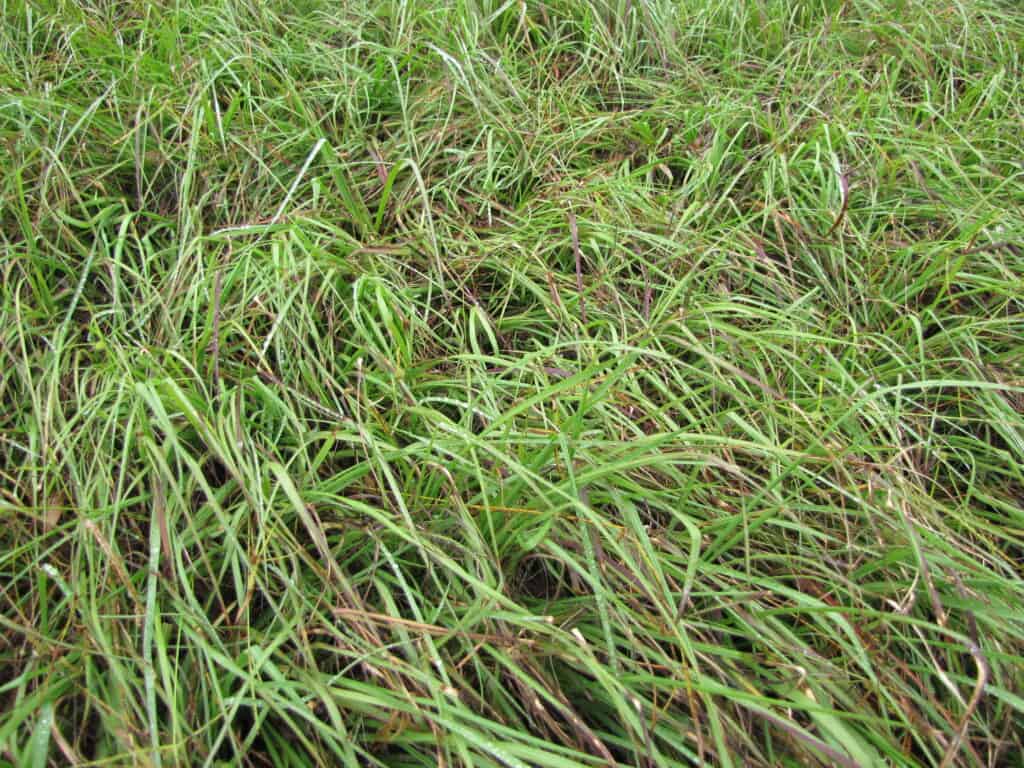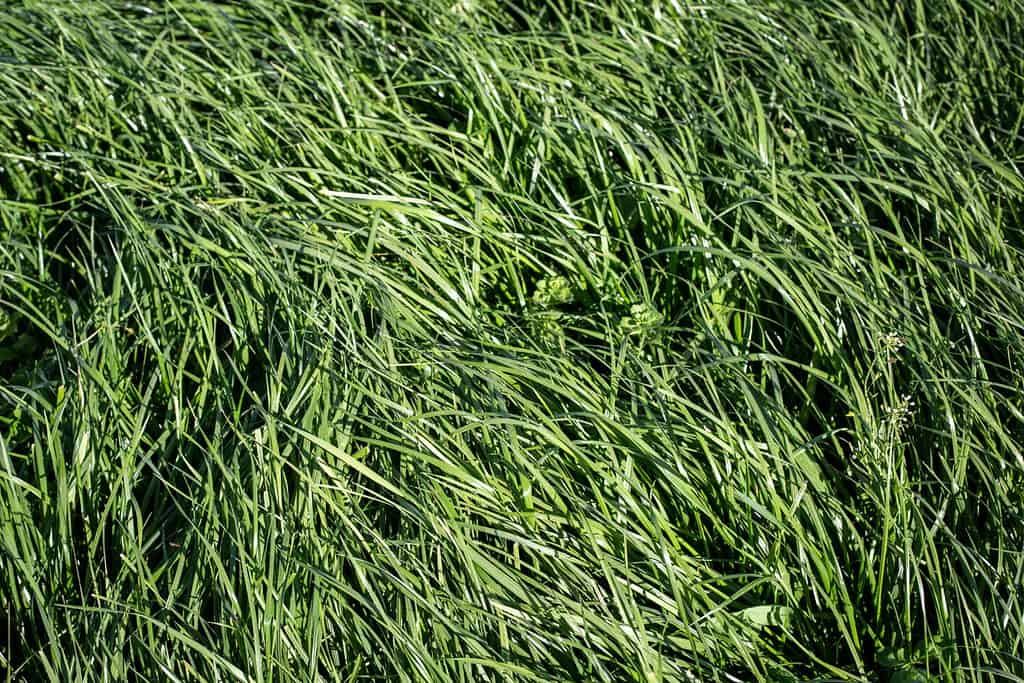When planting grass in the Midwest, what are the most important things to know? Is there a certain time or type of grass to plant? Grass can become fickle quickly; the best way to maintain a green and healthy lawn is to know the best practices when planting, watering, and managing it.
According to experts, there’s not only a “best time” to plant grass in the Midwest — planters should also remain aware of different factors that can affect the growth rate of their newly planted grass.
When is the Best Time of Year to Plant Grass in the Midwest?

Spring is the second-best time to plant grass in your yard, but fall is the ideal season.
©iStock.com/Bhupinder Bagga
If you live in the Midwest, you actually have two opportunities a year to plant grass in your yard. However, one will yield better results than the other.
Best Time: Fall
In the early fall, all the factors line up to make it the best time to plant grass in the Midwest. The sun still shines, the ground isn’t close to freezing yet, and gardeners can keep the slower-growing weeds at bay. Because temperatures remain mild this time of year, it’s easier for grass seeds to germinate and grow.
Mark Tappan is an agronomist with degrees in agronomy and sustainable agriculture from the University of Illinois and Murray State University, respectively. In his professional opinion, September is the target month in the fall for people to plant grass.
“The best time to plant grass in the Midwest is early to mid-September — ideally about six weeks before the first fall frost,” he said. “This timing will allow the newly seeded grass to establish ground cover and develop a healthy root structure that will enable it to survive the winter and provide vigorous spring growth.”
Root structure remains important to grass growing. Grass needs to establish strong roots that can efficiently carry nutrients and water to the rest of the plant. When planting in fall, the root structure should have time to grow hardily under the ground — which helps anchor and feed grass during the Midwest’s cold winters.
Runner Up: Spring
If you’re moving, busy, or otherwise unable to plant grass in the early fall months, your next best opportunity is spring. However, the ground’s wetness tends to give new grass a bit harder of a start than the ground in fall would. Additionally, spring’s weeds become much more unruly and can threaten the root structures of newly planted grass.
Lindsey Hyland, the founder of Urban Organic Yield, has both experience and degrees in agriculture and gardening. In conversation with A-Z Animals, she affirmed, “In the Midwest, the best times to plant grass are typically in the early fall or in the spring (April to early May). These seasons offer mild temperatures and adequate moisture for grass seed to establish well.”
Tappan weighed in about springtime grass planting in the Midwest, giving a word of warning. “Seeding in the spring typically doesn’t allow enough time for the lawn to establish before summer heat and drought stress kick in.”
Planting in spring remains a delicate balance of timing. Too early, and you’ll run into a still-frozen ground. Too late, and you risk the grass dying in the summer heat. Aim for April or May, as Hyland instructed, when temperatures are mild and the ground is still moist.
The Worst Time to Plant Grass in the Midwest

Even cool-season grass won’t germinate in winter.
©Forest and Kim Starr / CC BY 2.0, Flickr – Original / License
Winter remains the worst time to plant grass in the Midwest — purely because the ground is usually too frozen to plant anything! If your ground and soil aren’t malleable and moist enough, grass roots have no chance of taking hold. Furthermore, the temperature doesn’t allow for seeds to germinate. When seeds sit in temperatures below 50 degrees Fahrenheit, they will lay dormant and not grow properly (if they grow at all).
Why Is Fall the Best Time of Year to Plant Grass in the Midwest?
Experts have asserted that fall remains the best time to plant grass in the Midwest. But what makes it so special?
Grass needs a certain set of conditions to grow well. They include:
- Soil temperature. Soil needs to measure between 50 and 65 degrees Fahrenheit.
- Sunlight. Most grasses need somewhere between four and six hours of direct sunlight to thrive.
- Moisture. Depending on the type of grass planted, most species can handle around one to two inches of water a week. If it rains, gardeners and homeowners should stay aware of the level of rainfall and subtract that number from what they planned to manually water.
- Nutrients available. Did you know grasses need up to 16 unique nutrients to grow and thrive? Grass’s primary nutrients include potassium, phosphorus, and nitrogen. Grass also needs carbon dioxide, which it obtains through photosynthesis.
In the fall, the Midwest’s mild temperature, hours of sunlight, and average rainfall enable planters to provide the nutrient-rich soil grass needs to grow — making it the perfect time to plant.
Considerations for Midwesterns for Planting Grass
Before you plant your grass, several crucial considerations exist to take into account. By researching, planning, and testing before planting, you ensure your yard will thrive in the best conditions — with the least amount of maintenance.
Soil Preparation
Your soil will need the proper pH level to encourage grass to grow well. Homeowners can test their soil’s pH levels with handy kits from nearly any home improvement store. The target range for soil pH levels in the Midwest is between 6.8 and 7.2. The type of grass you choose to plant will also dictate the right pH level needed.
Type of Grass
Discussed in more detail below, the type of grass you choose to plant in your Midwestern lawn will determine much of the upkeep. Homeowners, gardeners, and landscapers should take the time to understand the different grasses that may take to the area best. If you’re concerned about growing time, ongoing maintenance, or resilience to foot traffic, pick the grass that makes the most sense for your lifestyle.
Seeding Method
Once you’ve chosen the grass seed, consider the instructions that come with it — and use your best judgment — to plant. The most common method of seeding for professionals remains power seeding, which is an efficient way to distribute grass seed and prevent overseeding. Other options include aeration seeding, slit seeding, and dispersing grass seed by hand.
Sun Exposure
Based on the current landscape of your lawn, do you know how much direct sunlight your new grass will get? If you have large trees, take that into account — it probably makes the most sense to choose a grass that is shade tolerant. Otherwise, your hard work at planting may become fruitless.
Plan for Watering
Grasses need a delicate balance of water. Underwatering results in slow-growing blades while overwatering can cause a litany of problems. Shallow root systems, yellow color, and an invitation to pests and fungus are consequences of an over-watered lawn.
Should Midwesterners Plant a Specific Type of Grass?

Tall fescue is a cool-weather grass well-suited for the Midwest’s climate.
©Sheryl Watson/Shutterstock.com
As far as the specific types of grass to plant, experts agree that one isn’t the best over another. However, Midwesterners might want to stick to cool-season grasses (like fescues, Kentucky bluegrass, and perennial ryegrass) over warm-season grasses. Some Midwest states, like parts of Missouri and Illinois, sit in the “transition zone,” where their climates can handle both cool-season and warm-season grasses.
“Tall fescue is a cool-season grass that has good drought and heat tolerance and is very adaptable to its environment,” suggested Tappan. “Fine fescues are the best option for shady areas, while Kentucky Bluegrass is successful in irrigated lawns where water is not a limiting factor.”
If you can’t decide, Hyland recommended planting a few similar types to enhance the aesthetics of your yard. “Kentucky bluegrass is popular for its lush appearance, while fine fescues are known for their shade tolerance. Consider a mix of grass types for a well-rounded lawn that can handle various conditions.”
When it comes to planting grass, consider what its use and maintenance will be after it germinates. Do you have dogs or kids that will put heavy foot traffic on it? If so, tall fescue may be the best option for its durability and deep roots. If you’re catching the tail-end of the fall grass-planting season, consider perennial ryegrass, because its germination window is just over a week-long compared to the two to six weeks for other grasses.
Other Tips for Planting Grass in the Midwest
Once you’ve planted the grass, consider the following best practices to keep it looking healthy all year long.
Mowing
Mowing your lawn short may increase the time you need between mows, but it decreases the health of the lawn. Mow high for lush, healthy grass. In addition, you only want to mow when your lawn is actively growing. If it’s dormant, you don’t need to mow it down.
Protection from elements
During drought season, keep your grass healthy by watering it on a schedule. In the winter, avoid stepping on it — especially if there’s snow on the ground. You may cause lasting damage.
Ongoing nutrients
Feed your lawn regularly with a nutrient-rich mixture that provides the 16 nutrients that grass needs to maintain its integrity and continue to grow.
Reseeding
Reseeding is different from overseeding. Instead of simply throwing grass seed down on an existing lawn, reseeding describes the process of completely tearing up the existing grass and planting a new lawn. If you decide you’ve picked the wrong type of grass, or the seeds didn’t germinate well, you can start over next fall with a new lawn.
Protect from pests
There’s more than one pest that can damage your lawn beyond repair. Grubs, sod webworms, chinch bugs, leatherjackets, skipper caterpillars, and armyworms remain just a few of the many pests that wreak havoc on your yard by making it their personal playground. Treating your yard year-round for pests will keep their larvae at bay.
Keep an eye out for thatch
Thatch describes an inter tangled bit of grass that has both living and dead shoots within it. Thatch tends to build up during the breakdown process of organic debris. While you don’t need to immediately rid your lawn of patches of thatch the moment you see them, keep an eye on how much thatch you have and consider aeration after a year.
Caring for Grass Is as Hard as You Make It
Unless you’ve planted several different types of grass in your back and front yard that need various types of nutrients, sun, and water — caring for grass in the Midwest isn’t rocket science. With a little research and hard work behind you, your grass will become a green, lush field that you and your family can enjoy season upon season.
The photo featured at the top of this post is © goldyrocks/iStock via Getty Images
Thank you for reading! Have some feedback for us? Contact the AZ Animals editorial team.







